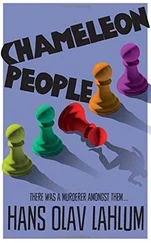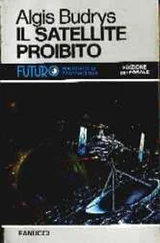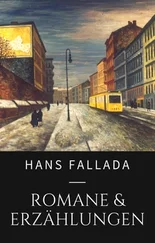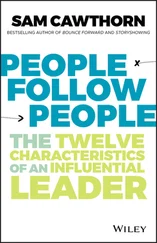Thus 10 May 1969 became one of the very few Saturdays when I yearned with all my heart for it to be Monday morning and the start of a new working week. I did not know then that the case would develop very quickly and dramatically in the meantime.
DAY TWO: Ten Living and One Dead
The following morning, 11 May 1969, started like every other Sunday in my life. I caught up with my lack of sleep from the previous week and did not eat breakfast until it was nearly lunch. The first few hours of the afternoon were spent reading the neglected papers from the week gone by. I even managed to read the first four chapters of the book of the week, which was Jens Bjørneboe’s Moment of Freedom.
When the telephone rang at twenty-five past five, I had just stepped out of the shower. I made absolutely no attempt to answer it quickly. The caller was remarkably persistent, however, and the phone continued to ring until I picked it up. I immediately understood that it was serious.
The telephone call was of course for ‘Detective Inspector Kolbjørn Kristiansen’. It was, as I had guessed, from the main police station in Møller Street. And, to my horror, it concerned Magdalon Schelderup. Only minutes before, they had received a telephone message that he had died over the course of an early supper at his home – in the presence of ten witnesses.
On the basis of what had been reported by the constables at the scene, it was presumed to be murder, but which of the witnesses present had committed the crime was ‘to put it mildly, unclear’. The officer on duty at the police station had been informed that Schelderup himself had contacted me the day before. As none of the other detectives were available, the duty officer felt it appropriate to ask whether I might be able to carry out an initial investigation and question the witnesses at the scene of the crime.
I did not need to be asked twice, and within a few minutes was speeding towards Gulleråsen.
When I got there at ten to six, there was no trace of drama outside the three-storey Gulleråsen mansion where Magdalon Schelderup had both his home and head office. Schelderup had lived in style, and he had lived in safety. The house sat atop a small hill in the middle of a fenced garden, and it was a good 200 yards to the nearest neighbour. Anyone who wished to enter without being seen would have to make their way across a rather large open space. They would also have to find a way through or over the high, spiked wooden fence that surrounded the entire property, with a single opening for the heavy gate that led into the driveway.
I mused that it was the sort of house one finds in an Agatha Christie novel. It was only later on in the day that I discovered it was known as ‘Schelderup Hall’ by the neighbours.
There were eight cars parked in the space outside the gate, in addition to a police car. One of them was Magdalon Schelderup’s own big, black, shiny BMW. I was quickly able to confirm that he had told the truth: three of the tyres had been slashed with either a knife or some other sharp instrument.
The other cars were all smaller, but still new and of good quality. The only exception was a small, well-used blue Peugeot that looked as if it had been on the road since the early 1950s. I jotted down a working theory that all of the deceased’s guests were overwhelmingly upper-class, albeit with some obvious variations in their financial situations.
It was not a warm welcome. As I made my way to the front door, a cacophony of wild and vicious barking suddenly erupted behind me, and I spun round instinctively to protect myself against the attacking dogs. But fortunately that was not necessary: the three great Alsatians that were straining towards me were clearly securely chained. Nevertheless, the sight of the dogs only served to strengthen my feeling of unease and my conviction that Magdalon Schelderup must have felt safe in his own home. The threat had been in his innermost circle – as he had expected, but it had come two days earlier than anticipated.
At the front door, I greeted the two constables who had been first at the scene and were now standing guard. They were both apparently relieved to see me, and confirmed that despite the death, the mood in the house was surprisingly calm.
I soon understood what they meant when, one corridor and two flights of stairs later, I stepped onto the red carpet in Magdalon Schelderup’s vast dining room. At first it felt as though I had walked into a waxworks. The furniture and interior was in the style of the early 1900s. The fact that there were no pictures or decoration of any type on the walls only added to the cold, unreal feeling. There was a single exception, which was therefore all the more striking. A well-executed full-length portrait of Magdalon Schelderup filled one of the short walls.
The host himself was now laid out on a sofa by the wall, just inside the door. He was dressed in a simple black suit, and as far as I could see had no obvious injuries of any kind. His eyes were closed and his lips had a bluish tinge. I could quickly confirm that there was no sign of life when I felt for a pulse in his neck and inner wrist.
A large dark mahogany table set for eleven dominated the centre of the room. The roast lamb and vegetables had been served on porcelain plates and the undoubtedly excellent wine had been poured into the wine glasses. But none of the guests had shown any inclination to eat or drink. They also had champagne, which no one had touched.
What had obviously been Magdalon Schelderup’s throne at the head of the table was now empty. The ten guests, silent in their Sunday best, had taken their seats around the table again. They were all looking at me, but no one said a word. A swift headcount informed me that there were six women and four men. I noted a degree of uncertainty and surprise in some of the faces, but saw no evidence of grief in any. Not a single tear on any of the twelve ladies’ cheeks around the table.
Eight of the guests I reckoned to be fairly evenly distributed across the age group thirty to seventy. They all looked very serious and impressively controlled. There were two who stood out, each in their own way, and therefore immediately grabbed my attention, and they were the youngest in the party.
In the middle of the right-hand side of the table sat a slim, fair-haired young man in his late twenties, who was by far the most nervous person in the room. An hour had passed since the death, and yet he was still squirming on his chair, his face hidden in his shaking hands. There were no tears here either, only beads of sweat on his temples and brow. It struck me that there was something familiar about the young man. But it was only when he realized that I was looking at him and he took his hands from his face that I suddenly recognized him as the famous athlete, Leonard Schelderup.
I had no doubt read somewhere on the sports pages at some point that Leonard Schelderup was Magdalon Schelderup’s son, then promptly forgotten. A year ago, I had myself stood on the stands at Bislett Stadium to watch the Norwegian Championships and seen Leonard Schelderup fly past on his way to winning gold in the middle-distance race, his shoulder-length hair fluttering in the wind. And I had been very impressed. Partly by the manner in which he allowed his competitors to pass, only then to speed up dramatically when the bell rang to mark the final lap. And partly by the almost stoic calm he displayed during the thunderous applause when he passed the finishing line. I commented to the person standing next to me at the time that it seemed that nothing, but nothing, could make Leonard Schelderup lose his composure – which was why it now made such an impression on me to see the same man sitting there, looking up at me with pleading eyes. He was only a matter of feet away and apparently on the verge of a nervous breakdown.
Читать дальше












